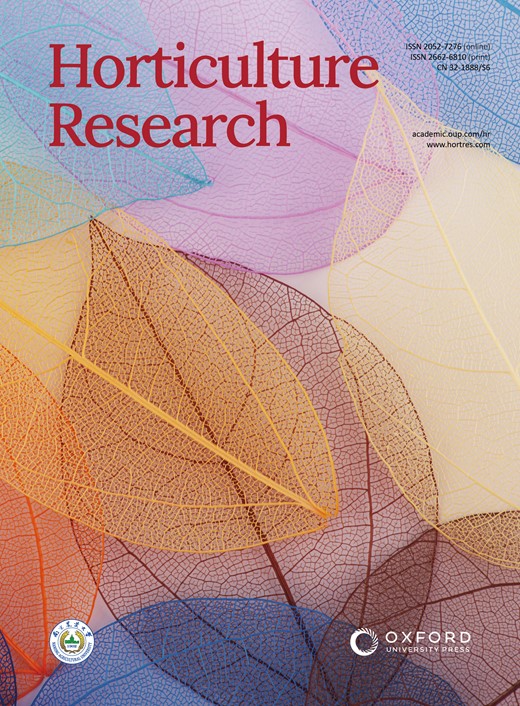Light Stress Elicits Soilborne Disease Suppression Mediated by Root-secreted Flavonoids in Panax notoginseng
IF 8.7
1区 农林科学
Q1 Agricultural and Biological Sciences
引用次数: 0
Abstract
Developing disease-suppressive soils is an effective approach for managing soilborne diseases, which can be achieved through crop metabolism and root secretion modification that recruit beneficial soil microbiota. Many factors, such as light, can elicit and modify plant metabolomic activities, resulting in disease suppression. To investigate the impact of light, Panax notoginseng was planted in a greenhouse and forest, conditioned with three levels of light intensities, including the optimal (15% light transmittance of full light), suboptimal low (5% light transmittance of full light) and suboptimal high (30% light transmittance of full light) intensities. The rhizosphere microbiota of P. notoginseng and root rot disease caused by soilborne pathogen Ilyonectria destructans, and the mechanism was elucidated. Results showed that suboptimal light conditions alleviated root rot disease of P. notoginseng by enriching beneficial microbiota in the rhizosphere. Both low and high light stresses enhanced the secondary metabolism profile in favor of plant defense, particularly the flavonoid pathway. Notably, high light stress demonstrates a robust ability to promoted flavonoid metabolism and secretion, resulting in the enrichment of more beneficial microorganisms that suppressed the soilborne pathogen I. destructans. These findings highlight the potential for adjusting canopy light intensities to improve soil health and promote sustainable agriculture.三七根部分泌的类黄酮介导光胁迫对土传病害的抑制作用
开发抑制病害的土壤是管理土传病害的有效方法,可通过改变作物代谢和根系分泌物来招募有益的土壤微生物群。光照等许多因素都能引起和改变植物代谢组的活动,从而抑制病害。为了研究光照的影响,将三七种植在温室和森林中,采用三种光照强度,包括最佳光照强度(全光透射率的 15%)、次优低光照强度(全光透射率的 5%)和次优高光照强度(全光透射率的 30%)。研究了五倍子根瘤菌群与土传病原菌 Ilyonectria destructans 引起的根腐病的关系及其机理。结果表明,次优光照条件通过丰富根瘤菌圈中的有益微生物群缓解了田七的根腐病。弱光胁迫和强光胁迫都增强了有利于植物防御的次生代谢,特别是类黄酮途径。值得注意的是,强光胁迫显示出促进类黄酮代谢和分泌的强大能力,从而富集了更多的有益微生物,抑制了土传病原体I. destructans。这些发现凸显了调整冠层光照强度以改善土壤健康和促进可持续农业发展的潜力。
本文章由计算机程序翻译,如有差异,请以英文原文为准。
求助全文
约1分钟内获得全文
求助全文
来源期刊

Horticulture Research
Biochemistry, Genetics and Molecular Biology-Biochemistry
CiteScore
11.20
自引率
6.90%
发文量
367
审稿时长
20 weeks
期刊介绍:
Horticulture Research, an open access journal affiliated with Nanjing Agricultural University, has achieved the prestigious ranking of number one in the Horticulture category of the Journal Citation Reports ™ from Clarivate, 2022. As a leading publication in the field, the journal is dedicated to disseminating original research articles, comprehensive reviews, insightful perspectives, thought-provoking comments, and valuable correspondence articles and letters to the editor. Its scope encompasses all vital aspects of horticultural plants and disciplines, such as biotechnology, breeding, cellular and molecular biology, evolution, genetics, inter-species interactions, physiology, and the origination and domestication of crops.
 求助内容:
求助内容: 应助结果提醒方式:
应助结果提醒方式:


